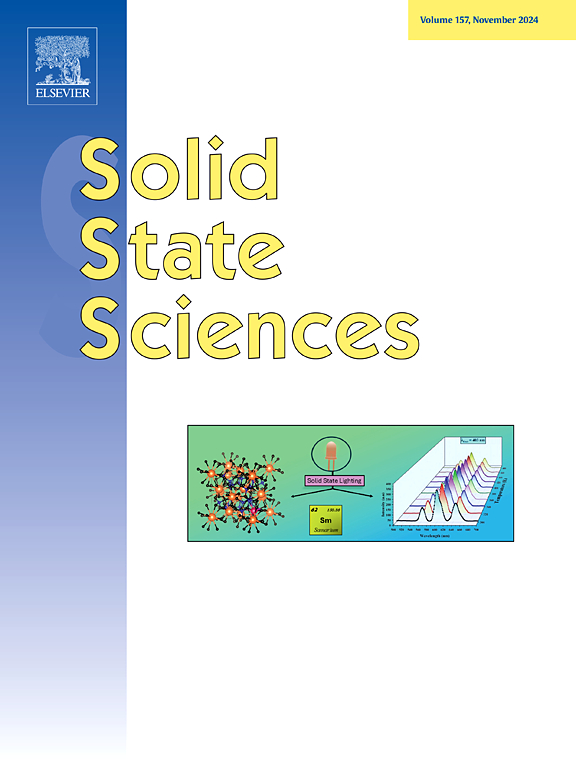Pressure-temperature stability diagram of MgB2 – Consequences for sintering of dense MgB2 ceramics
IF 3.4
3区 化学
Q2 CHEMISTRY, INORGANIC & NUCLEAR
引用次数: 0
Abstract
The MgB2 compound has been largely studied due to its high superconducting properties. Such compound is well known to be difficult to densify. Utilization of Spark Plasma Sintering (SPS) to achieve high density ceramics has been proposed by many authors. However, the phase analysis of the samples from these papers systematically presents secondary phases such as MgB4, MgB7 or MgO. Thermodynamic studies seem to indicate that high pressures should increase the temperature stability domain of MgB2. Therefore, in order to achieve high density pure MgB2 ceramics, spark plasma sintering at low temperatures and high pressures has been investigated. Experiments demonstrated that increasing the pressure can reduce and even eliminate the presence of MgB4. However, they also show that increasing the dwell time to achieve higher density leads to the reappearance of the MgB4 compound. Therefore, high pressures rather reduce the kinetic of MgB2 decomposition than increasing the MgB2 temperature stability domain. The highest density achieved, without any composition change compared to the precursor powder, is 95 % relative density for a ceramic sintered at 700 °C under 1000 MPa during a dwell time of 2 h. These promising results make it possible to consider the investigation of the superconducting properties on a pure MgB2 ceramic and to determine the influence of the MgB4 phase on these properties.

MgB2的压力-温度稳定性图-烧结致密MgB2陶瓷的后果
MgB2化合物由于其高超导特性而得到了广泛的研究。众所周知,这种化合物很难致密化。利用火花等离子烧结(SPS)制备高密度陶瓷已被许多作者提出。然而,这些论文中样品的物相分析系统地呈现出MgB4、MgB7或MgO等次生相。热力学研究似乎表明,高压应该增加MgB2的温度稳定域。因此,为了获得高密度的纯MgB2陶瓷,研究了低温高压放电等离子烧结技术。实验表明,增加压力可以减少甚至消除MgB4的存在。然而,他们也表明,增加停留时间以达到更高的密度会导致MgB4化合物的重新出现。因此,高压不但没有增加MgB2的温度稳定域,反而降低了MgB2的分解动力学。与前驱体粉末相比,在700°C、1000 MPa、停留时间2小时下烧结的陶瓷,在没有任何成分变化的情况下,达到的最高密度是95%的相对密度。这些有希望的结果使得考虑研究纯MgB2陶瓷的超导性能并确定MgB4相对这些性能的影响成为可能。
本文章由计算机程序翻译,如有差异,请以英文原文为准。
求助全文
约1分钟内获得全文
求助全文
来源期刊

Solid State Sciences
化学-无机化学与核化学
CiteScore
6.60
自引率
2.90%
发文量
214
审稿时长
27 days
期刊介绍:
Solid State Sciences is the journal for researchers from the broad solid state chemistry and physics community. It publishes key articles on all aspects of solid state synthesis, structure-property relationships, theory and functionalities, in relation with experiments.
Key topics for stand-alone papers and special issues:
-Novel ways of synthesis, inorganic functional materials, including porous and glassy materials, hybrid organic-inorganic compounds and nanomaterials
-Physical properties, emphasizing but not limited to the electrical, magnetical and optical features
-Materials related to information technology and energy and environmental sciences.
The journal publishes feature articles from experts in the field upon invitation.
Solid State Sciences - your gateway to energy-related materials.
 求助内容:
求助内容: 应助结果提醒方式:
应助结果提醒方式:


